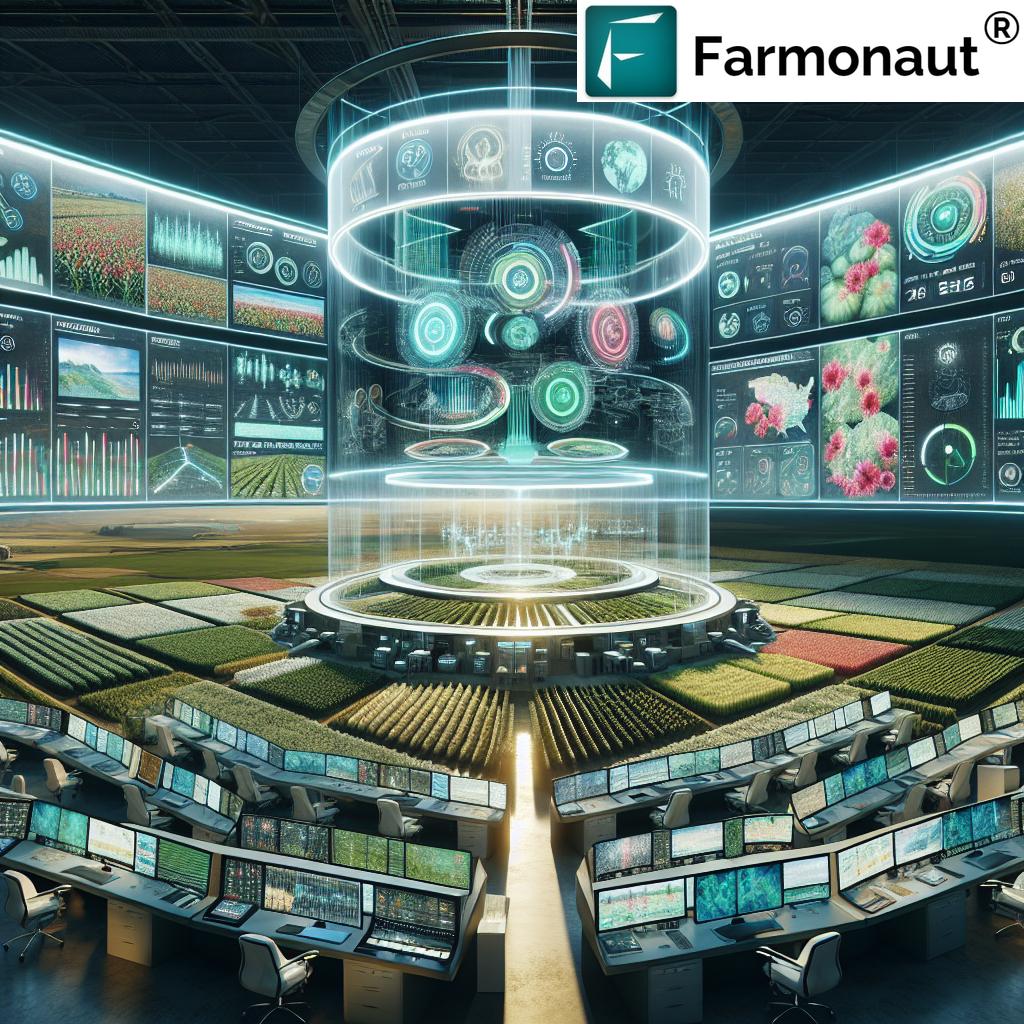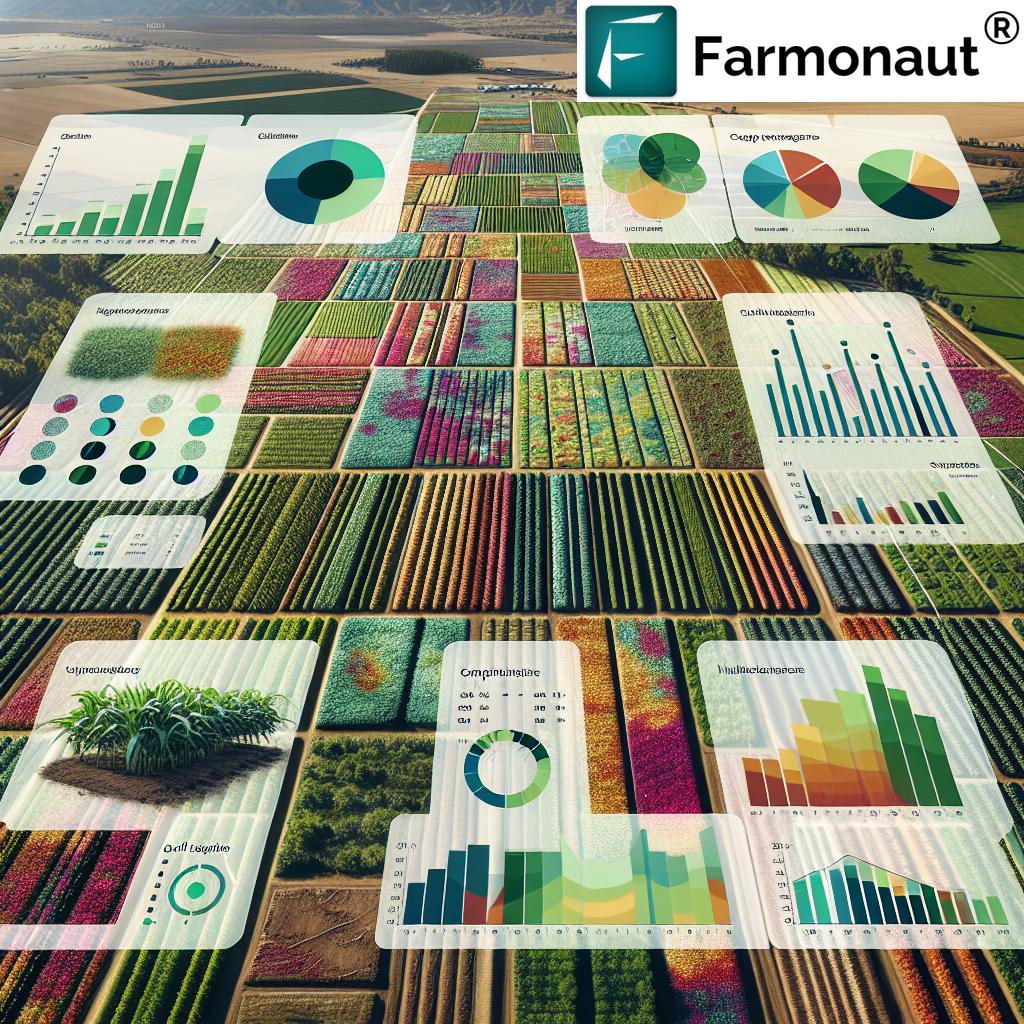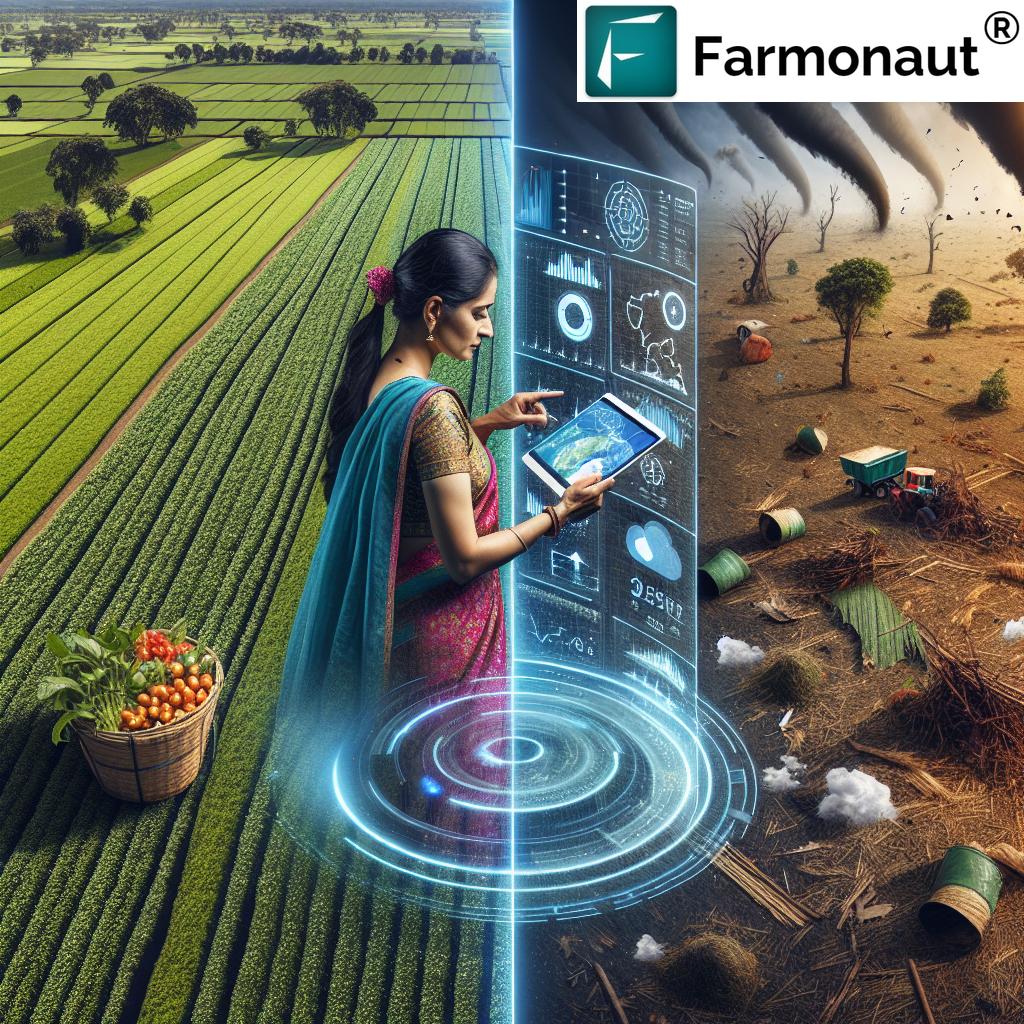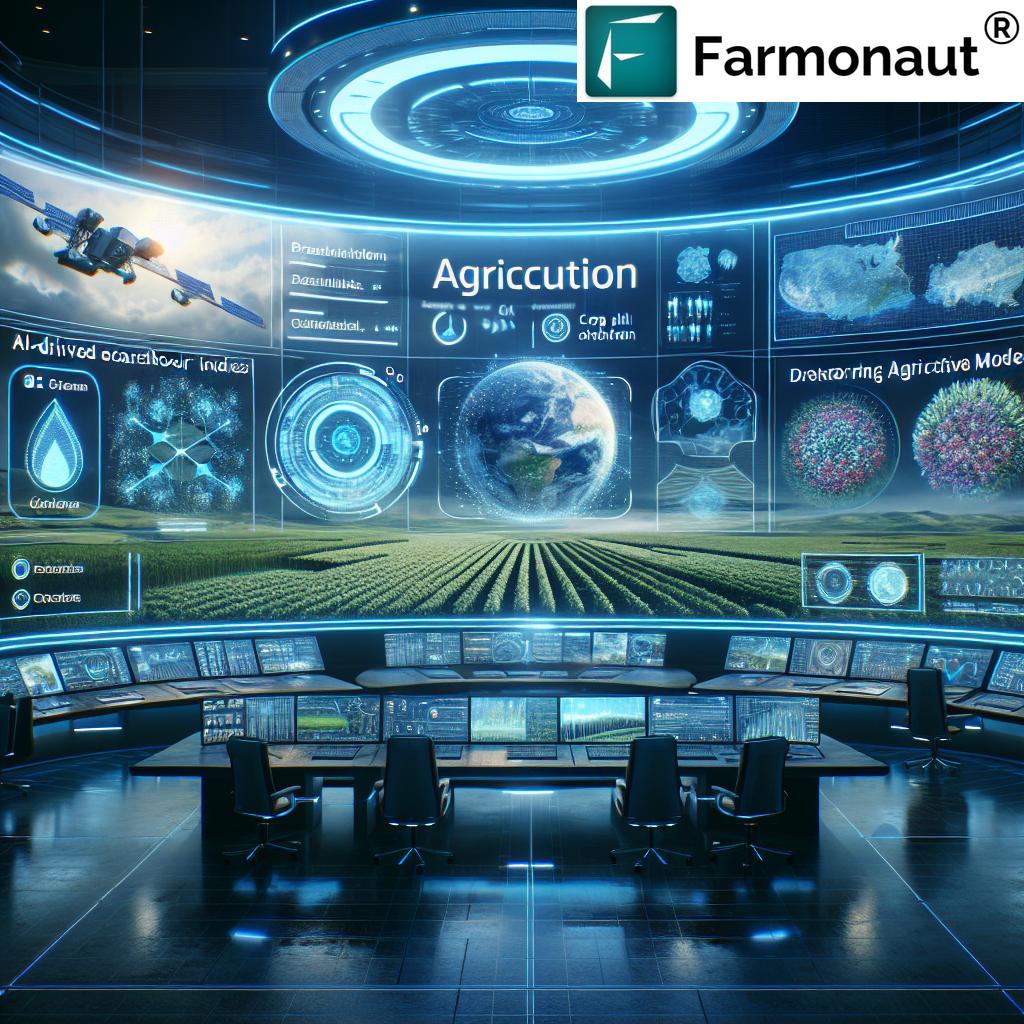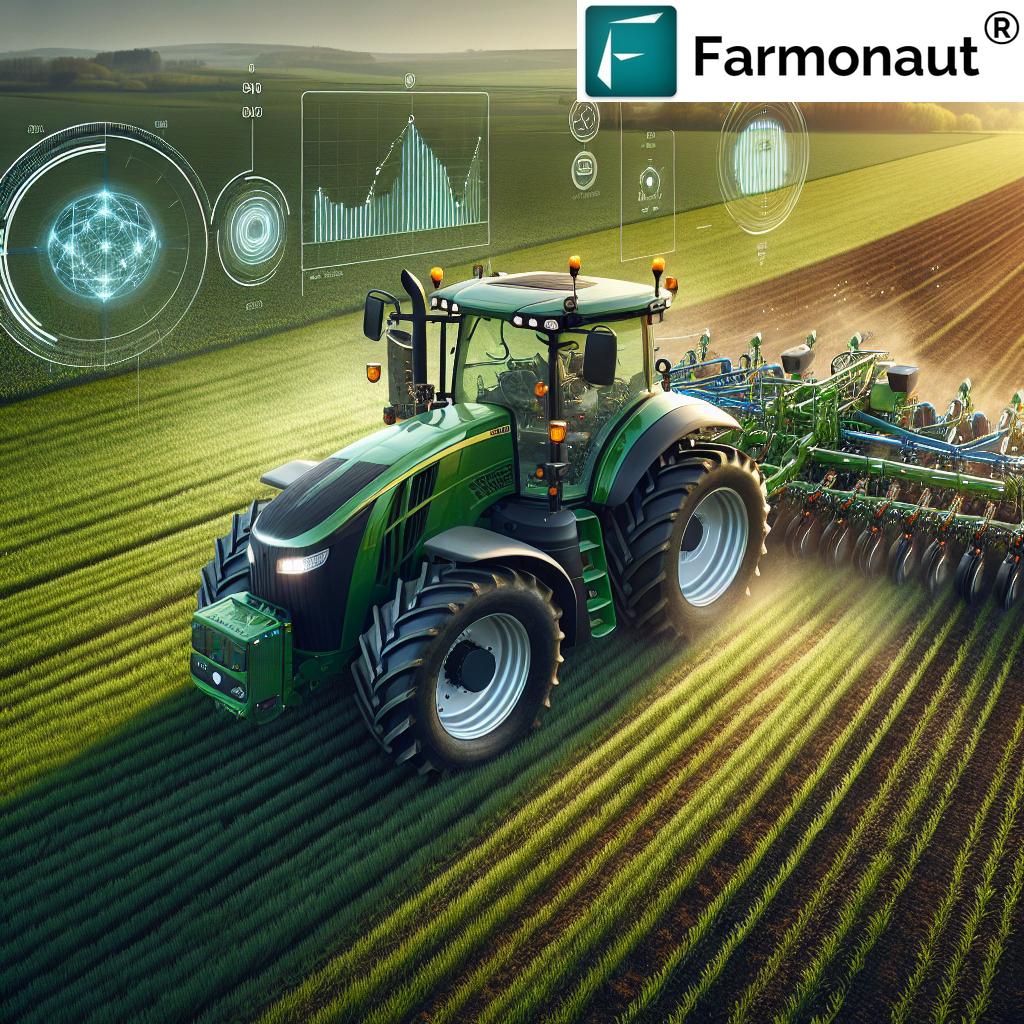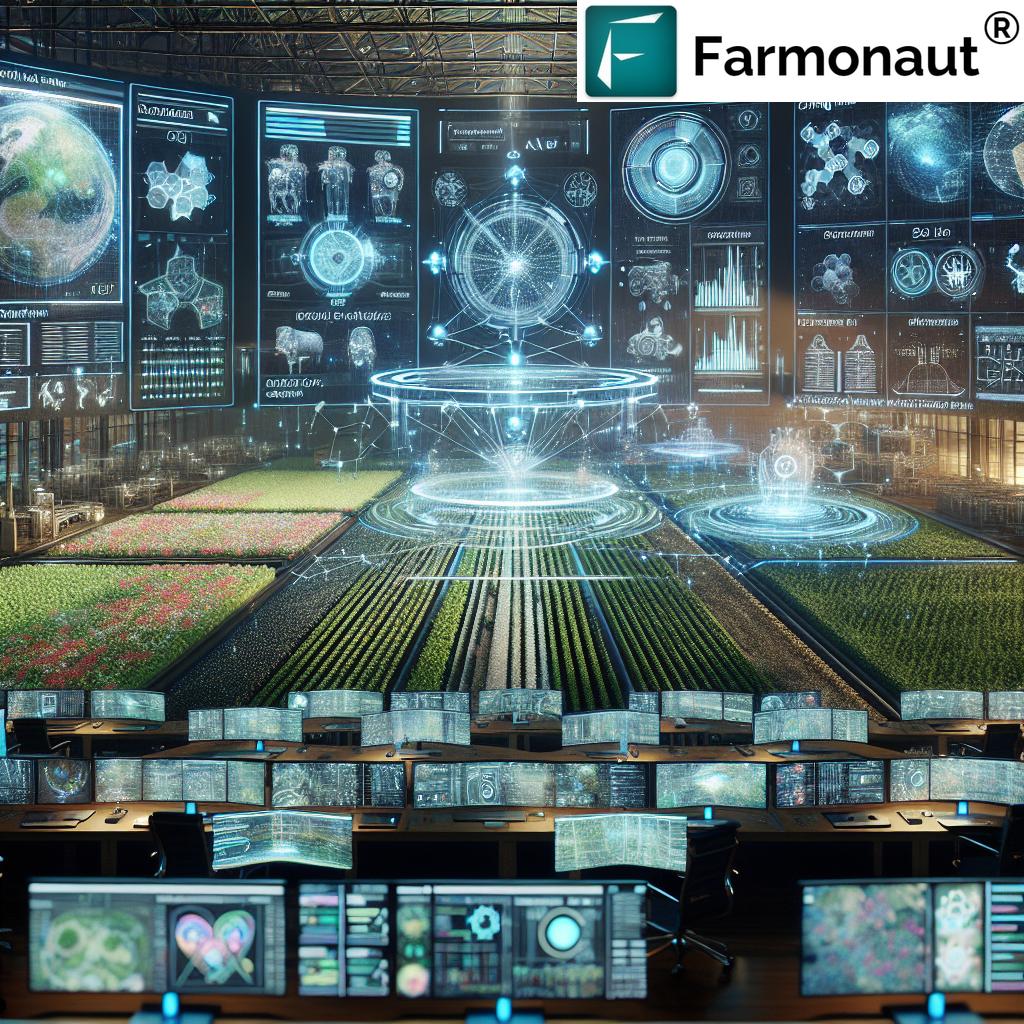IoT Traceability: 7 Shocking Ways To Boost Yields Fast
“Over 60% of agri-businesses using IoT traceability report improved transparency in their supply chains within one year.”
Introduction: The Future of Agriculture, Forestry & IoT Traceability
The Internet of Things (IoT) is rapidly transforming agriculture and forestry traceability solutions by enhancing transparency, efficiency, and sustainability. Through real-time environmental sensors, smart tags, and advanced connectivity, we are now able to monitor, collect, and analyze vast amounts of data from the field to the forest, and all the way to the consumer. This revolution is not just about improving product quality and safety, but also about ensuring that our supply chains are transparent and our practices are environmentally sound.
In this comprehensive guide, we’ll discover the seven most surprising ways IoT traceability can substantially boost yields—and do so fast. Along the way, you’ll see how technologies like blockchain in agriculture, precision farming technologies, AI in crop monitoring, satellite-based solutions, and RFID timber tracking change the game for traceability, operational decisions, and resource optimization. Let’s embark on this journey toward smarter and sustainable farming and forestry.
“Smart sensors in forestry can track over 10,000 trees simultaneously, enhancing real-time monitoring and data accuracy.”
Understanding IoT Traceability
IoT traceability refers to embedding interconnected devices, sensors, and data collection systems across every stage of the agricultural and forestry supply chain. These technologies allow us to monitor, record, and verify the journey of products—from their origin (such as crops in the field or trees in the forest) to the final consumer. Real-time data is collected on critical parameters, including location, temperature, humidity, and soil moisture.
- For agriculture: we track conditions under which crops are grown, harvested, processed, and transported.
- For forestry: we monitor the health, growth rates, and movement of trees, seedlings, and timber logs.
This increased visibility boosts quality and safety standards, improves operational efficiency, and establishes greater trust and accountability among all stakeholders.
Technologies Driving IoT Traceability
The backbone of modern traceability in agriculture and forestry lies in our adoption and integration of several cutting-edge technologies:
Sensors and RFID Tags
Smart sensors and RFID tags (read more) collect data such as soil moisture, temperature, humidity, and location. For instance, RFID tracking (RFID timber tracking) enables precise tracking of logs and forest products, boosting operational efficiency and compliance.
Blockchain
The adoption of blockchain in agriculture (learn more at the Product Traceability Page) ensures that data throughout the supply chain is secure, transparent, and immutable. This strengthens consumer trust by verifying authenticity and enhancing accountability in food and material chains.
Artificial Intelligence (AI) & Machine Learning
AI in crop monitoring analyzes enormous volumes of data, helps us identify patterns, and predicts issues before they become costly problems.
AI also powers intelligent advisory systems—such as Farmonaut’s Jeevn AI—that optimize decisions about irrigation, planting schedules, and crop health interventions.
Satellite Imaging and Remote Sensing
Remote sensing for crop health brings unprecedented insights into our fields and forests. Satellite imagery provides real-time monitoring of crop vegetation health (NDVI), stress levels, and environmental threats with remarkable precision. This capability nurtures more sustainable farming practices and helps in early detection of problems across large-scale holdings.
Autonomous & Connected Devices
Autonomous tractors, drones, irrigation systems, and connected monitoring devices are defining the next chapter in operational efficiency across rural landscapes, especially where labor is limited and precision is paramount.
Comparative Benefits Table: Smart IoT Solutions in Agriculture & Forestry
| IoT Technology | Primary Function | Estimated Yield Improvement (%) | Traceability Score (1–10) | Transparency Score (1–10) | Efficiency Gain (%) | Example Use Case |
|---|---|---|---|---|---|---|
| Smart Environmental Sensors | Monitor soil, moisture, temperature, humidity | 17–22% | 8 | 8 | 15–25% | Real-time crop monitoring and precise irrigation |
| RFID & GPS Tracking | Track location and movement of assets | 11–16% | 9 | 9 | 14-18% | RFID timber tracking in forest logistics |
| Blockchain | Immutable, transparent data ledger | 7–15% | 10 | 10 | 8–14% | Product traceability and supply chain reporting |
| AI & Machine Learning | Pattern recognition & predictive analytics | 16–24% | 7 | 8 | 17-25% | AI in crop monitoring & yield forecasting |
| Satellite Imaging & Remote Sensing | Large-scale crop & forest health analytics | 14–20% | 9 | 9 | 16-22% | Remote sensing for crop health and forest management |
| Autonomous Equipment | Automated operations with sensor input | 18–27% | 6 | 7 | 20-28% | Drone-based seeding and irrigation |
As showcased, each IoT innovation delivers unique gains in yield, traceability, transparency, and efficiency. Adopting these technologies is often quickest through data-driven platforms that consolidate and visualize such data, like Farmonaut’s satellite-powered farm management system.
IoT Traceability: 7 Shocking Ways to Boost Yields Fast
By leveraging IoT traceability, we unlock a range of immediate and long-term benefits—enabling smarter resource use, increased productivity, and a competitive edge in global agriculture and forestry supply chains.
1. Precision Farming Technologies & Monitoring Parameters
Precision farming technologies rely on a network of real-time environmental sensors deployed throughout fields to monitor soil moisture, temperature, humidity, and nutrient content. These sensors generate location-specific data, enabling us to:
- Apply water, fertilizers, and pesticides only where needed
- Reduce waste of costly inputs via targeted application
- Boost yields and maintain strict adherence to quality standards
- Quickly identify changes in environmental factors that may threaten crop health
Example: Farmonaut’s platform visualizes soil moisture data, enabling farmers to optimize irrigation. Explore our Large Scale Farm Management app for streamlined operational monitoring.
2. Real-Time Supply Chain Tracking for Transparency
With IoT devices, we can track crops and forestry products across the entire supply chain—from harvesting and processing to transportation and delivery. This delivers full agricultural supply chain transparency:
- Ensures freshness and safety by monitoring environmental conditions such as temperature and humidity during transit
- Minimizes food waste due to spoilage or mishandling
- Empowers consumers to verify the journey and origin of their products, building trust
This level of transparency is made easier by using sensor-integrated tags, real-time dashboards, and traceability solutions that connect all data points into a continuous, secure product history.
3. Blockchain Integration for Secure, Immutable Traceability
Blockchain in agriculture creates an immutable ledger that secures each step of the supply chain—preventing data tampering, fraud, or loss of critical information. Every record, from seedling planting and crop growth to harvest and shipment, is digitally timestamped and locked for permanent auditability.
- Increases trust and accountability among stakeholders and regulatory agencies
- Supports compliance with safety and quality standards
- Bolsters consumer confidence by offering end-to-end transparency (Explore Blockchain-Based Traceability by Farmonaut)
Organizations searching for secure, scalable platform integration can explore Fleet and Resource Management by Farmonaut, combining blockchain with operational tools.
4. AI in Crop Monitoring and Decision-Making
AI-driven advisory systems process multidimensional datasets—including remote sensing imagery, sensor data, and historical crop growth records—to:
- Identify patterns associated with pest outbreaks or disease emergence
- Predict potential risks and recommend immediate action plans
- Optimize scheduling of irrigation, fertilization, and harvesting to maximize yield and minimize resource use (Crop Loan Verification via AI-powered Satellite Imagery)
This integration of AI and machine learning means our operations are not just reactive but proactive, greatly improving operational efficiency and reducing yield loss.
5. Remote Sensing for Crop Health and Forest Management
Satellite imaging and remote sensing give us the power to monitor thousands of hectares with high-frequency, high-resolution imagery.
- Rapidly assess vegetation health, soil moisture conditions, and detect growth anomalies
- Generate NDVI maps to spot early crop stress or pinpoint areas needing intervention
- Integrate with carbon footprinting platforms to measure and document the sustainability of our farming practices (Farmonaut’s Carbon Footprinting Tool)
Such solutions foster sustainable farming practices and support long-term compliance with environmental standards.
6. RFID Timber Tracking & Enhancing Forestry Practices
In forestry, RFID tags attached to logs and seedlings—combined with GPS—track every movement and status update, improving forestry traceability solutions:
- Prevent illegal logging via real-time asset monitoring
- Guarantee compliance with sustainability and legal requirements
- Facilitate transparent timber tracking for certified wood products
RFID and GPS also reduce double-handling, lower logistical waste, and cut operational costs.
Looking to optimize large plantations or forest operations? Access our all-in-one command platform for Crop Plantation, Forest & Advisory Analytics.
7. Autonomous IoT-Enabled Irrigation Systems
Automated irrigation powered by real-time environmental sensors dramatically improves water efficiency while optimizing crop health:
- IoT-enabled irrigation triggers watering only when sensors detect a critical drop in soil moisture
- Reduces over-irrigation, conserves water, and ensures consistent crop growth
- Enhances operational efficiency for both smallholder and commercial farms
Adopt this with affordable remote sensing. Learn more via the Farmonaut Admin App.
IoT Traceability Applications in Agriculture
-
Precision Farming:
We leverage real-time data from sensors to apply inputs where and when needed, reducing waste and boosting yields. Platforms that enhance farming precision are at the core of this transformation. -
Crop Health & Growth:
IoT traceability means we monitor crop health from seed to harvest, ensuring no step is left to chance. Read more at our Crop Loan and Insurance Verification page to discover how satellite-based proof accelerates access to finance. -
Supply Chain Optimization:
By automating tracking of environmental conditions across the chain, we minimize delays and ensure safety and freshness for each shipment. -
Sustainable Practices:
Using AI, sensors, and satellite imaging, we monitor compliance with sustainability goals such as reduced carbon footprint (Carbon Footprinting Tool).
IoT Traceability in Forestry
-
Forest Health Monitoring:
With IoT and smart sensors, we track the health and growth rates of trees and ensure that sustainable management plans are adhered to. -
Efficient Timber Tracking:
RFID tags and GPS improve timber logistics and ensure product authenticity, crucial for export certification and anti-illegal logging strategy. -
Supply Chain Optimization:
With precise, real-time data, the transport and chain of custody for every harvested log or product becomes efficient and transparent.
“Smart sensors in forestry can track over 10,000 trees simultaneously, enhancing real-time monitoring and data accuracy.”
Challenges and Considerations in IoT Traceability
-
Connectivity:
Rural regions may lack reliable internet coverage, impacting device functionality. Selecting satellite-based or offline-first technologies mitigates this challenge. -
Investment Cost:
Initial deployment of IoT infrastructure can be significant, especially for smaller farms or forestry operations. -
Data Security & Privacy:
Protecting sensitive data against cyber threats and unauthorized access is crucial. Strong encryption, blockchain, and managed access protocols address these issues. -
Skill Gaps:
Many stakeholders require training to understand and operate these advanced systems efficiently. Selecting platforms that prioritize user-friendliness is critical.
For further guidance on addressing practical adoption hurdles, our Farmonaut API and Developer Documentation provide everything developers and system integrators need for seamless integration.
The Future of IoT Traceability in Agriculture and Forestry
The next era of IoT traceability will be defined by deeper integration across technologies, smarter automation, and a stronger commitment to sustainability. We envision a future where:
- AI and blockchain are seamlessly combined—offering fully automated insights, security, and compliance reporting throughout the supply chain.
- Autonomous equipment and drones become common, bringing scale and efficiency even to remote or labor-constrained operations.
- Sustainability tracking—including carbon emissions monitoring—becomes a competitive differentiator and a regulatory necessity.
- Consumer transparency is elevated further, letting buyers scan a product and immediately view its origin, journey, compliance, and environmental impact.
To begin your journey with advanced, scalable, and affordable IoT-powered traceability, consider Farmonaut’s subscription options below.
Farmonaut: Transforming Agriculture Through Advanced IoT Traceability
As a pioneer in satellite-based precision farming, Farmonaut unlocks cutting-edge IoT-enabled traceability and management solutions customized for everyone in the value chain—from smallholder farmers to large agribusinesses, NGOs, and corporate buyers.
-
Satellite-Based Crop Health Monitoring:
Real-time NDVI vegetation maps, soil moisture analytics, and weather insights empower farm decision-making without the need for expensive on-ground sensors. -
Jeevn AI Advisory System:
Our AI-driven module delivers instant, actionable recommendations for crop management, leveraging remote sensing and localized environmental data. -
Blockchain-Integrated Traceability:
Robust protection of data and proof of compliance for supply chains—ideal for food, textiles, and timber. See Traceability Solution Details. -
Fleet & Resource Optimization:
Transparency in vehicle deployments, machinery management, and field logistics. Discover smarter Fleet Management Tools. -
Carbon Footprinting & Sustainability:
Real-time emission tracking and compliance, helping you highlight your commitment to climate-smart agriculture. Dive deeper at Carbon Footprinting Services.
Our affordable, accessible platform works on web, Android, and iOS apps, or can be integrated into external systems via our powerful API. This enables scalable adoption for all users—from first-generation smallholders to tech-driven enterprises—without the prohibitive hardware costs of traditional methods.
Frequently Asked Questions
What is IoT traceability, and why is it integral to agriculture and forestry?
IoT traceability is the use of networked devices and sensors to collect, monitor, and record key parameters—such as location, temperature, humidity, and movement—across the supply chain. For agriculture and forestry, this means end-to-end visibility, transparency, and quality guarantees as products journey from their origin to consumers.
How does IoT traceability contribute to sustainability and waste reduction?
Real-time monitoring enables precise application of inputs (water, fertilizers, pesticides), minimizing overuse and environmental impact. Remote sensing identifies issues early, preventing crop or timber loss and thereby reducing waste. Platforms like Farmonaut also offer carbon foot printing for sustainability compliance.
What challenges do users face with IoT traceability adoption?
Major challenges include connectivity issues (especially in rural environments), high upfront investment for hardware, data security/privacy concerns, and training/skill barriers for new users. Solutions include using satellite-based monitoring to bypass connectivity gaps, adopting affordable app/software platforms, and prioritizing robust encryption.
How can smallholder farmers and cooperatives access IoT traceability solutions cost-effectively?
Affordable subscription-based digital platforms like Farmonaut provide access to data-driven insights, precision farming, and supply chain transparency through web, Android, and iOS apps. This eliminates the need for high-cost on-ground sensors and expertise, democratizing advanced agricultural technology.
Conclusion: IoT Traceability Is Key to Boosting Yields Fast
As we have explored, the integration of IoT traceability into the worlds of agriculture and forestry is more than an upgrade—it’s a transformation. By harnessing sensors, blockchain, AI, and remote sensing, we achieve superior transparency, efficiency, and quality at every link of the supply chain.
The path toward sustainable and high-yield farming and forestry runs through data-driven decision-making, proactive risk management, and verified transparency. Our experience proves that with solutions like Farmonaut, it is now possible for every stakeholder—farmer, processor, exporter, or end consumer—to benefit from reliable traceability, higher yields, and reduced waste.
Whether you are ready to optimize your hectares with precision farming technologies, secure your operations with blockchain-based traceability, or simply need actionable advice and transparency at your fingertips, advanced IoT platforms are your vehicle to fast, measurable improvements and true supply chain transformation.
Ready to accelerate your own agriculture or forestry operations with state-of-the-art IoT traceability and management tools? Download our Farmonaut app for web, Android, or iOS today, or integrate via our API to unlock the next generation of agricultural technology.
















